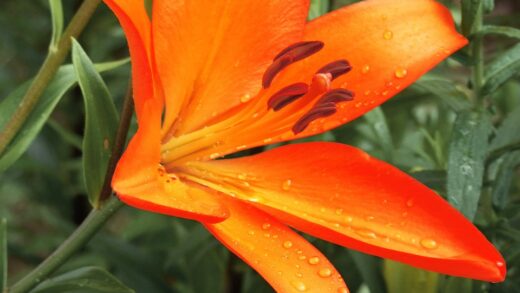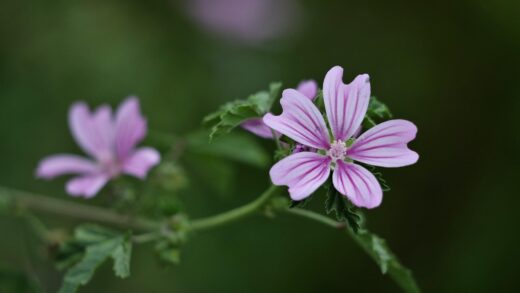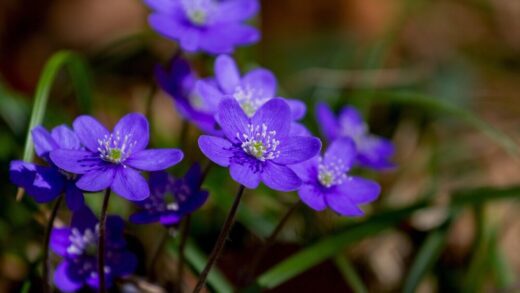To achieve a truly spectacular laurustinus, one that boasts lush, deep green foliage and a profusion of winter blossoms, it is essential to address its nutritional needs. While this shrub is not an exceptionally heavy feeder, a well-balanced diet of essential nutrients is crucial for supporting its vigorous growth, robust health, and prolific flowering. Fertilization is the practice of supplementing the naturally available nutrients in the soil to ensure the plant has everything it needs to perform at its best. Understanding what to feed your laurustinus, when to feed it, and how to apply fertilizer correctly will elevate your plant from merely surviving to truly thriving.
Plants, like all living organisms, require a range of nutrients to grow and function correctly. These are typically divided into macronutrients, which are needed in larger quantities, and micronutrients, which are required in smaller amounts but are no less important. The primary macronutrients are Nitrogen (N), Phosphorus (P), and Potassium (K), and these form the basis of most general-purpose fertilizers. Nitrogen is vital for leaf and stem growth, Phosphorus plays a key role in root development and flower production, and Potassium is essential for overall plant health and disease resistance.
Laurustinus generally performs well in moderately fertile, well-drained soil. If your garden soil is naturally rich in organic matter, you may find that your shrub needs very little supplemental fertilization once it is established. The regular addition of organic mulches like compost or well-rotted manure can often provide a slow and steady supply of all the necessary nutrients, while also improving the soil structure. However, in poorer, sandy soils or for plants grown in containers, a more structured fertilization plan is often necessary to prevent nutrient deficiencies.
It is important to recognize the signs of nutrient deficiency, which can manifest in various ways. A common symptom is chlorosis, the yellowing of leaves, which can indicate a lack of nitrogen or iron. Stunted growth and sparse foliage may also point to a general lack of nutrition. A reluctance to flower, despite proper pruning and light conditions, can sometimes be linked to a deficiency in phosphorus. By learning to interpret these visual cues, you can diagnose potential nutritional issues and take corrective action to restore your plant to full health.
Choosing the right type of fertilizer
When you step into a garden center, the vast array of fertilizers available can be overwhelming, but choosing the right one for your laurustinus is quite straightforward. The best option for shrubs is typically a balanced, slow-release granular fertilizer. These products are formulated to release their nutrients gradually over a period of several months, providing a steady supply of food for the plant that mimics the natural decomposition of organic matter in the soil. This avoids the rapid, weak growth that can be stimulated by high-nitrogen liquid feeds.
More articles on this topic
Look for a fertilizer with a balanced N-P-K ratio, such as 10-10-10 or 14-14-14, or one specifically formulated for trees and shrubs. These general-purpose feeds provide an even amount of the three main macronutrients, supporting all aspects of the plant’s growth from foliage to flowers to roots. Some formulations, often labeled as “rose and flower food,” may have a slightly higher phosphorus number (the middle number), which can be beneficial for promoting abundant blooming, making them a good choice for laurustinus as well.
Organic options are an excellent alternative to synthetic granular fertilizers and are often preferred for their soil-improving qualities. Products like bone meal are a great source of phosphorus, while blood meal provides a ready source of nitrogen. A well-rounded organic fertilizer mix, often based on ingredients like alfalfa meal, kelp meal, and poultry manure, can provide a broad spectrum of both macro- and micronutrients. The ultimate organic approach is to simply top-dress the soil around the plant with a generous layer of high-quality compost or well-rotted manure each year.
For plants grown in containers, the nutritional needs are slightly different. Nutrients are leached out of the potting medium more quickly with each watering, so they need to be replenished more frequently. While a slow-release granular fertilizer incorporated into the compost at the start of the season is a great foundation, you may also want to supplement this with a balanced liquid fertilizer. Applying a diluted liquid feed every two to four weeks during the main growing season from spring to late summer can ensure the plant has a constant supply of easily accessible nutrients.
The annual fertilization schedule
Timing is everything when it comes to fertilizing your laurustinus effectively. Applying nutrients at the right time in the plant’s growth cycle ensures they can be readily absorbed and utilized to support the functions that are most active at that time. Applying fertilizer at the wrong time, on the other hand, can be wasteful at best and potentially harmful at worst, for instance by encouraging soft, new growth that is vulnerable to frost damage. A simple, well-timed annual schedule is all that is needed for this resilient shrub.
More articles on this topic
The best time to apply a general-purpose, slow-release granular fertilizer is in late winter or early spring, just as the plant is beginning to emerge from its winter dormancy and before the main flush of new growth begins. This is typically just as the bulk of its flowering period is coming to an end. Applying the fertilizer at this time provides the necessary nutrients to support the development of new leaves and stems throughout the spring and early summer. It also helps the plant to replenish the energy reserves it expended during its long winter flowering season.
To apply a granular fertilizer, sprinkle it evenly on the soil surface around the base of the plant, extending it out to the drip line (the imaginary circle on the ground directly under the outermost leaves). The amount to use will be specified on the product packaging, and it is important to follow these instructions carefully to avoid over-fertilizing, which can burn the roots. After applying the granules, gently scratch them into the top inch of soil with a rake or cultivator and then water the area thoroughly to help dissolve the granules and carry the nutrients down to the root zone.
It is generally recommended to avoid fertilizing your laurustinus late in the growing season, specifically from late summer onwards. Applying fertilizer, especially one high in nitrogen, at this time can stimulate a flush of tender new growth that will not have sufficient time to harden off before the first frosts of autumn. This soft growth is highly susceptible to frost damage, which can weaken the plant and create entry points for diseases. The plant should be encouraged to slow its growth and prepare for dormancy as winter approaches.
The benefits of organic matter
While synthetic fertilizers provide a direct and targeted source of nutrients, incorporating organic matter into the soil is arguably a more holistic and sustainable approach to feeding your laurustinus. Organic matter, such as garden compost, leaf mold, and well-rotted manure, offers a multitude of benefits that extend far beyond simple nutrition. It improves the physical structure of the soil, enhances its water-holding capacity, and fosters a healthy ecosystem of beneficial microorganisms that are vital for long-term soil fertility.
One of the primary benefits of organic matter is its ability to improve soil structure. In heavy clay soils, organic particles bind with the fine clay particles to create larger aggregates, which improves drainage and aeration, creating a healthier environment for the plant’s roots. In sandy soils, which often drain too quickly and do not retain nutrients well, organic matter acts like a sponge, holding onto moisture and nutrients and making them available to the plant’s roots for a longer period.
Organic matter is also a slow-release source of a wide range of essential plant nutrients. As it is broken down by soil organisms like bacteria, fungi, and earthworms, it gradually releases a balanced diet of both macro- and micronutrients in a form that is readily available for plant uptake. This slow and steady release process prevents the risk of root burn associated with over-application of synthetic fertilizers and ensures the plant receives a continuous supply of food throughout the growing season.
The easiest way to incorporate organic matter into the care routine for your laurustinus is through mulching. Applying a one- to two-inch layer of compost or other organic material on the soil surface around the base of the shrub each spring is highly beneficial. As earthworms and other soil life work to break down this mulch, they will naturally incorporate it into the soil profile, continuously improving its structure and fertility. This simple annual task can significantly reduce the need for any other type of fertilizer and builds a foundation of healthy soil for a healthy plant.
Addressing specific nutrient deficiencies
Although a regular feeding schedule with a balanced fertilizer will prevent most problems, occasionally a laurustinus may exhibit symptoms of a specific nutrient deficiency, particularly if it is growing in very poor or alkaline soil. Being able to recognize these signs and know how to correct them is a valuable skill. One of the most common issues seen in shrubs is iron chlorosis, which is often induced by a high soil pH rather than an actual lack of iron in the soil.
Iron chlorosis manifests as a distinct pattern of yellowing on the newest leaves. The veins of the leaves will typically remain dark green while the tissue between the veins turns a pale yellow or even white in severe cases. This occurs because in alkaline soils (with a pH above 7.0), iron becomes chemically locked up and unavailable for the plant to absorb, even if it is present in the soil. Laurustinus prefers a slightly acidic to neutral pH, so it can be susceptible to this condition on chalky or limestone soils.
To treat iron chlorosis, you can apply a product containing chelated iron. Chelated iron is formulated to remain stable and available to plants even in alkaline soil conditions. It can be applied as a soil drench or as a foliar spray, which is often faster acting as the nutrient is absorbed directly through the leaves. A foliar spray provides a quick fix to green up the foliage, but a soil application is necessary for a longer-term solution.
For a more permanent fix in alkaline soils, you can work to gradually lower the soil pH over time by incorporating acidic organic matter like pine needles or peat moss into the soil. Applying soil acidifiers containing sulfur is another effective long-term strategy. It is always a good idea to perform a simple soil pH test before undertaking any major pH amendments to confirm that high pH is indeed the cause of the problem. This targeted approach ensures you are treating the root cause of the deficiency rather than just its symptoms.




















